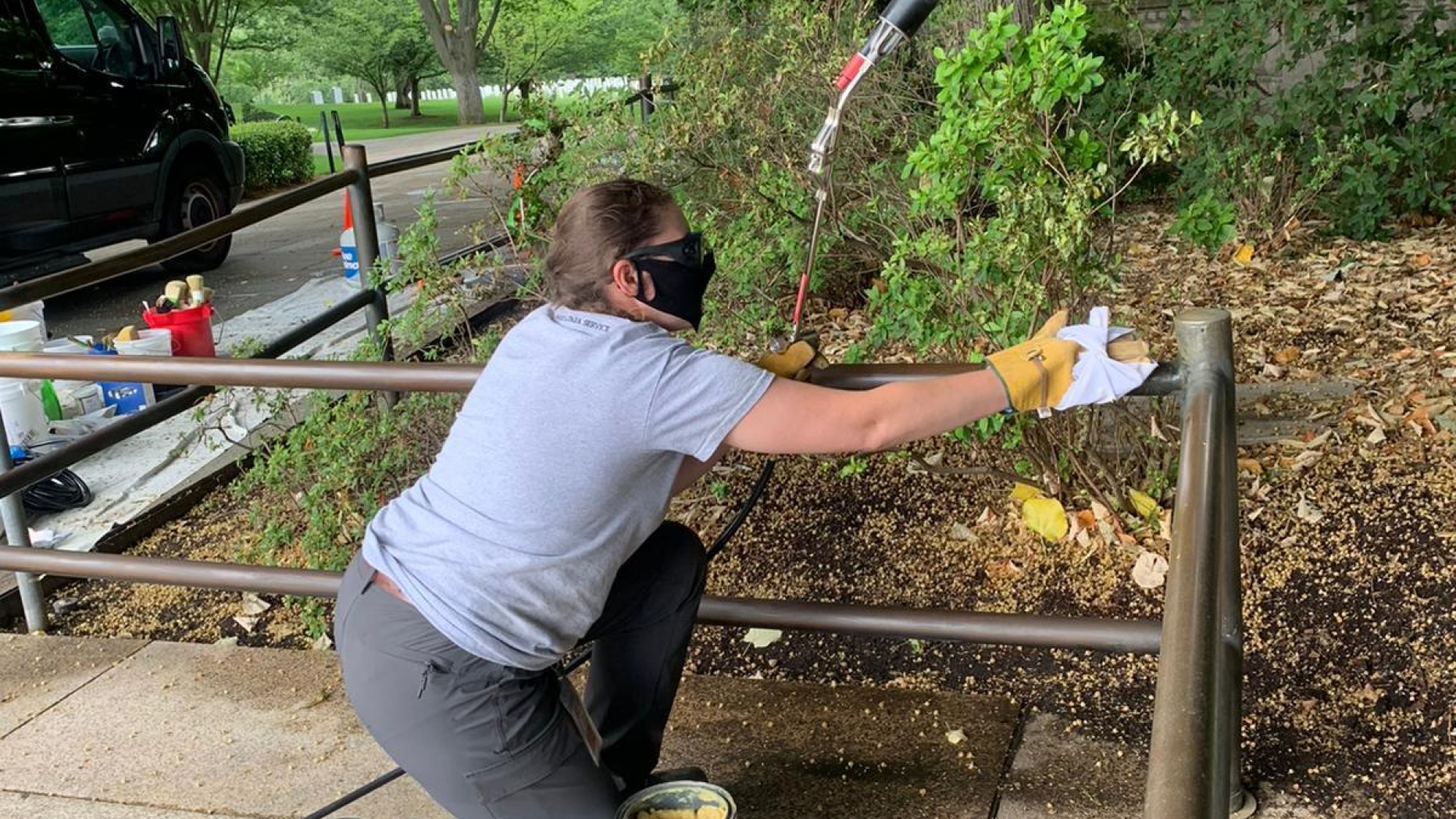Jennifer Boggs | Arlington National Cemetery, Architectural Conservation

"We had the unique opportunity to work at one of the most congested portions of the cemetery without the interruption of thousands of daily visitors."
Stuart Weitzman School of Design
102 Meyerson Hall
210 South 34th Street
Philadelphia, PA 19104

"We had the unique opportunity to work at one of the most congested portions of the cemetery without the interruption of thousands of daily visitors."
"During the summer of 2020, I worked as an architectural conservator at Arlington National Cemetery through the National Park Service’s National Council of Preservation Education Internship program. There were two conservation interns, including myself. We worked under a UPenn HSPV alumni, Caitlin Smith.
We had numerous projects this summer primarily focused around the Memorial Amphitheater. Our first task was to document the conditions of the items recovered from the Memorial Amphitheater Memorabilia box. Next, we applied zinc oxide to the Amphitheater to reduce the amount of grey biofilm present on the marble surface. The project that took the longest involved the bronze railings adjacent to the Tomb of the Unknown Soldier Plaza. We hand-shaved, applied patina, applied 2 coats of hot wax, and applied 1 coat of paste wax to over 30 railings. The experience we gained from the railings was very useful when it came time to spot treat the Sir John Dill sculpture and when we got to re-conserve the Memorial Amphitheater bronze flagpole base. The most interesting project we performed this summer was the rust reduction and cleaning of the Tomb of the Unknown Solider plaza and ledger stones. We performed several rounds of tests on both the granite and marble ledger stones to determine the safest and most effective chemicals for the jobs. We even got to use a digital microscope to monitor closely the effects of the test treatments. The rust reduction on the Roosevelt Fountain went quite efficiently after performing the plaza tests. In the end, we learned much about site safety and environmental protection while working on the rust reduction and stone cleaning projects.
On rainy days, our outdoor work was limited. As a result, we spent the time writing reports for the work that we completed. Such reports included writing comprehensive statements of work, providing photos of every stage of the treatment processes, reading and adding all of the Safety Data Sheets, and writing thorough Conditions to be Treated statements. We also had the opportunity to prepare Section 106 forms for the cemetery. When reports were complete, we researched the conditions that we were treating and how others (not ANC) were going about with their own projects (i.e. Jefferson Memorial Laser treatment).
Overall, our summer was very productive. We had the unique opportunity to work at one of the most congested portions of the cemetery without the interruption of thousands of daily visitors. We even had the opportunity to speak with numerous other people in the National Park Service, the Smithsonian, and the Army about the role preservation plays in their particular jobs. I am incredibly grateful for the opportunity I had this summer to work as a conservator at our nation’s most premier military cemetery."